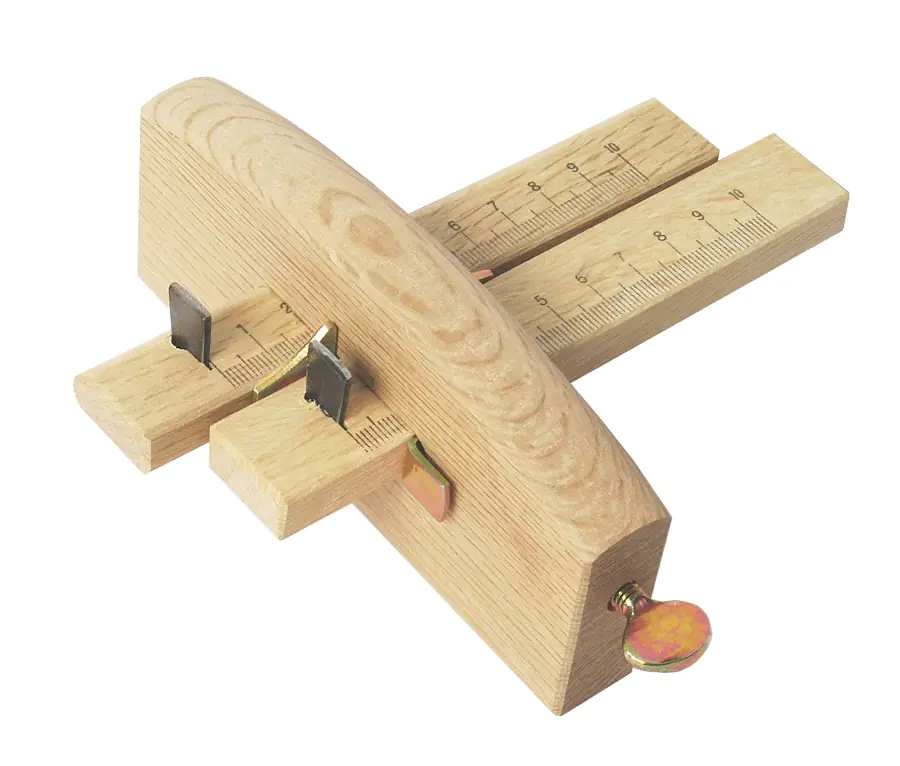Nihon-zao Suji-Keshiki -
TWO BEAM Marking Gouge TAKAKATSU
Available, delivery time: 1-3 businessdays within Germany
Product information
Japanese marking gauges are equipped with knives instead of needles and have a relatively wide fence. These small knives have the advantage of being able to scribe cleanly even across the grain. Knives cut the fibers, whereas needles only tear them. Like other Japanese woodworking tools, this one is also pulled.
The blade of the Keshiki is ground on one side only, with the bevel inside, so the cutting edge faces away from the fence. In the case of Kama-Keshiki (mortise gauges) with two knives, the bevels face each other, while in Suji-Keshiki with two wooden tongues, the bevels are parallel and not opposing. If the blade does not protrude enough from the slot in its delivered state, you should not try to drive the knife in with strong hammer blows, as the wood of the tongue may split. Instead, enlarge the slot slightly with a needle file or a sharp knife. It is sufficient for the knife edge to protrude 1 – 5 mm, depending on personal preference. However, it should not be more, as otherwise, you cannot hold the marking gauge precisely horizontally over the workpiece. Then push the knife in and fix it with only very light hammer taps!
The printed scale should only be seen as a guide; the distance from the knife edge to the fence should always be checked with a ruler. Fine adjustments can be made with Keshiki with a wedge by careful hammer blows with the broad side of the hammer on the respective ends (end grain) of the tongue. The wedge can be fixed with a strong thumb pressure, or if that is not enough, with a light hammer blow.
The fence is held with a locking screw.
| Properties | |
|---|---|
| Scribing pin length | 140 mm |
| Stop length | 135 mm |
| Scale | 100 mm |
Login

